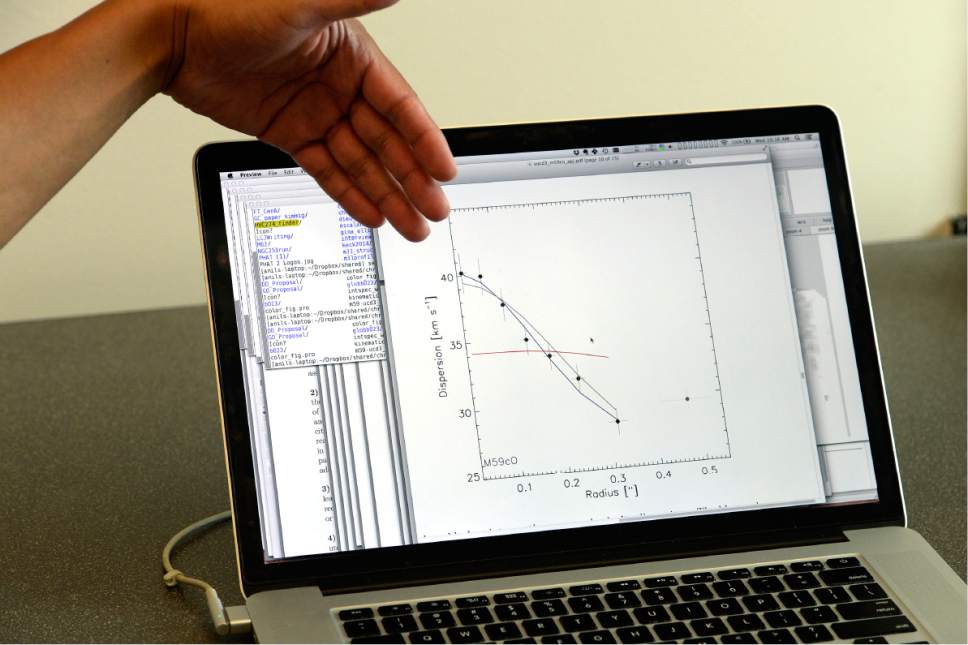This is an archived article that was published on sltrib.com in 2017, and information in the article may be outdated. It is provided only for personal research purposes and may not be reprinted.
Despite their mysterious nature, two black holes recently discovered by University of Utah scientists are shedding light on how galaxies form.
The black holes, located in the Virgo galaxy cluster, are the second and third that U. astrophysicists have discovered at the center of what they call "ultracompact" galaxies, formations that could illuminate how the universe formed and evolved.
"This is the story of how we got here," said Anil Seth, an assistant professor in the U.'s department of physics and astronomy, and co-author of the study, published last week in The Astrophysical Journal.
"If you want to understand how our star formed and how our planet formed in our galaxy," Seth said, "then you need to know how galaxies formed in general."
Unlike the Milky Way, these compact galaxies do not have shapely, defined arms that orbit around a central point — a supermassive black hole, in most cases. Rather, these galaxies consist of globular collections of stars.
They're not unlike star clusters, said Chris Ahn, a U. doctoral candidate and the study's lead author.
But they're bigger than star clusters, which had scientists wondering: Were the compact galaxies just oversize star clusters or something different?
Ahn and Seth now are convinced that compact galaxies are, in fact, a different phenomenon.
Star clusters typically predate galaxies, Ahn said — galaxies are thought to form when star clusters collide and merge. But the presence of black holes at the center of these compact galaxies suggests that they might be ancient galaxies that have been stripped of their outer stars.
To identify the black holes, Ahn and his collaborators used the Gemini North telescope on Mauna Kea in Hawaii and the Hubble Space Telescope to collect data about the distribution and movement of stars within galaxies VUCD3 and M59cO.
They used that data to build a computer model of the galaxies and then observed that their inner stars orbited faster than the stars on the outside — a sign of a black hole.
The next step, he said, will involve looking for further evidence that compact galaxies are being stripped of their stars. Seth said the team also plans to look for black holes in several smaller compact galaxies, which are more difficult to study.
"The ones we published are in the biggest compact galaxies we know of," Seth said. "There is evidence the smaller galaxies have black holes, and, if they did, that would be a lot of black holes."
Twitter: @EmaPen









